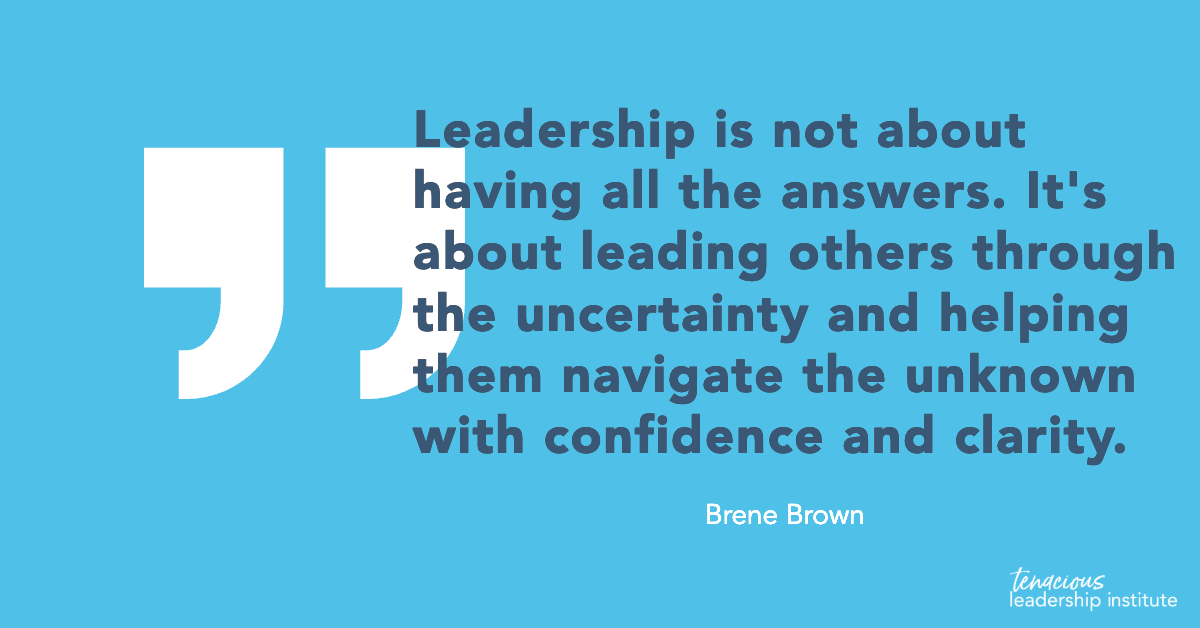The Surprising Ways Uncertainty Derails Even the Best Leaders
Most leaders think of uncertainty as something to manage around. But what if the real danger isn’t what’s happening externally—but what uncertainty quietly does to your leadership internally?
Research from Harvard Business Review shows that in uncertain environments, leaders often retreat into short-term, self-protective behaviors—reducing communication, delaying decisions, and narrowing their strategic lens.
A study from MIT Sloan further found that when ambiguity increases, leaders’ willingness to delegate, innovate, or act decisively can drop significantly—especially when the stakes are high and outcomes unclear. In other words, uncertainty doesn’t just slow down external momentum. It silently rewires how leaders think, relate, and behave.
These shifts aren’t always obvious. Leaders still show up to meetings. They still push for results. But beneath the surface, confidence is eroding, trust becomes tentative, and action is replaced by hesitation. Left unaddressed, these subtle shifts can compound—stalling progress and shrinking the very leadership presence that disruption demands.
Here are three surprising ways uncertainty can hinder leaders—and what to do instead:
1. Uncertainty Narrows Strategic Thinking
You might notice this in your own leadership when bold ideas suddenly seem reckless or when you're holding back from pivoting because you're "waiting for more data." The paradox? In uncertainty, decisive action often creates clarity—but the brain resists this.
Neuroscience shows that when the brain senses threat or ambiguity, it redirects energy from expansive thinking to protection. In uncertain times, leaders unconsciously default to risk mitigation rather than innovation—even when growth is what’s needed.
At TLI, we work with leaders to restore strategic agility by helping them recognize the mental contraction that uncertainty causes. The goal isn’t to remove the ambiguity—it’s to restore cognitive range even within it.
2. Uncertainty Undermines Relational Confidence
Uncertainty doesn’t just affect decisions—it affects how leaders show up with others. Many leaders become less communicative, more guarded, or overly directive when they feel unsure, often without realizing it. Teams then interpret this as a lack of trust or alignment.
In one client organization, a high-performing executive team began to fracture—not due to disagreement, but due to silence. The leader didn’t want to “say the wrong thing” amid changing priorities, so they said less. But the team read this as indecision and withdrew their own energy in response.
At TLI, we teach leaders to communicate more during uncertainty—not with false certainty, but with transparency and intent. Trust is built not by having all the answers but by staying connected through the unknown.
3. Uncertainty Triggers Hidden Control Patterns
Perhaps most surprisingly, uncertainty can pull even collaborative leaders into controlling behavior. This is especially true for high achievers used to delivering under pressure. When clarity vanishes, control can feel like the only stable variable—so leaders begin micromanaging, over-planning, or making decisions in isolation.
These behaviors don’t usually appear as dysfunction at first. They look like “being thorough,” “getting ahead of things,” or “making sure it’s done right.” But underneath is a nervous system seeking stability through control.
The solution isn’t to relax into chaos—but to increase visibility and shared ownership. Leaders we coach learn to name what’s unknown, co-create forward experiments with their teams, and share the emotional labor of leading through ambiguity.
Uncertainty is not the enemy—it’s a constant. But when left unchecked, it can quietly erode the very leadership capacities that help teams thrive: vision, trust, and shared energy.
At TLI, we help leaders build the internal clarity, strategic tools, and relational strength to lead through ambiguity with confidence. If that’s what your team needs right now, consider joining our upcoming Lead Through Disruption program or schedule a custom Leadership Audit to get started.
The sooner you learn to work with uncertainty, the sooner your leadership becomes future-proof.
Leadership Practice: Disrupt the Control Loop
This week, take five minutes to name one area where uncertainty is causing you to subtly tighten your grip.
Then ask yourself:
“What would shared ownership look like here?”
Choose one small way to loosen the reins and invite team participation—even if the outcome isn’t fully clear. It may feel vulnerable, but it creates more clarity than control ever could.
Author
Athena Williams, Founder and CEO of Tenacious Leadership Institute, has been supporting leaders worldwide to become more tenacious for over 20 years. She has found that tenacity is the key to sustained leadership success in today’s ever-changing world. Through her coaching and leadership development programs, she helps leaders expertly handle change, complexity and other challenges so they can quickly get better results for themselves, their teams and their organizations.
Take the first step to becoming a tenacious leader by scheduling a call with us.



